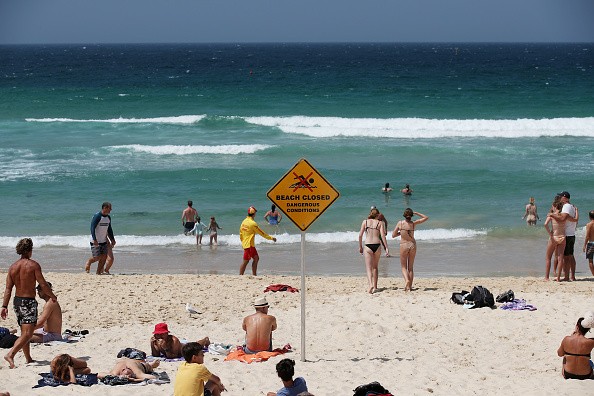Tsunamis are massive waves that occur under the sea as a result of earthquakes or volcanic eruptions. Tsunami waves do not grow in height as they go further into the ocean.
As the depth of the water declines, the waves build up to greater heights as they go onshore.
Tsunami waves' speed is determined by ocean depth rather than the distance from the wave's source.
Tsunamis
 (Photo : Matt King/Getty Images)
(Photo : Matt King/Getty Images)

A train of basic, progressive rhythmic waves propagates enormous distances over the ocean surface in ever-widening rings when an earthquake or other producing impulse occurs, similar to the waves created by a pebble dropping into a small pool, as per Britannica.
A tsunami may travel up to 800 kilometers (500 miles) per hour in the deep ocean. The wavelengths are huge, often surpassing 500 kilometers (310 miles), yet the wave amplitudes (heights) are tiny, approximately 30 to 60 cm (1 to 2 feet)
However, when the waves reach a continent's shore, friction with the rising sea floor slows the waves' velocity.
The wavelengths shrink and the wave amplitudes (heights) increase as the velocity decreases. In 10 to 15 minutes, coastal seas can surge up to 30 meters (approximately 100 feet) above normal sea level.
Following the rise in sea level, the continental shelf waters begin to fluctuate.
The majority of the damage is caused by three to five main oscillations, which manifest as violent "run-ups" of rushing water that uproots trees, take buildings from their foundations, transport boats far inshore, and wipe away whole beaches, peninsulas, and other low-lying coastal formations.
The subsequent discharge of water is frequently just as devastating as the run-up.
Read more: New Algorithm To Predict When Tsunamis Strike
How to survive a tsunami?
Kirk Willcox from Surf Aid International, a non-profit organization and partner in the World Nomads Footprints Program, has had a great experience with tsunami-affected areas.
The three vital signs you can use to detect an impending tsunami are;
1. You feel shakes and tremors underfoot
2. The water begins to recede
3. If you hear a loud roar from the ocean.
What should you do if a tsunami warning is issued? Learn how to recognize the warning signals, how to prepare, and how to be safe:
Prepare yourself for a tsunami
According to World Nomads, It's critical to be prepared if you're traveling to places known to be tsunami hotspots and to pay attention to any warnings issued by local authorities.
Make sure you have an emergency kit in your luggage in case you need to leave in the middle of the night.
Keep it stocked with adequate food, drink, climate-appropriate clothes, and, if feasible, a small first aid kit to last a few days.
However, make every effort to keep it light so you can quickly pick it up and flee. If necessary, you may need it.
Need to go to a higher elevation
Ascend the slope. Kirk stated that this is simply the finest tsunami protection advice he can provide.
It's better to be cautious than sorry if you suspect a tsunami is approaching your region (or submerged).
Tsunamis may happen quickly after an earthquake, therefore the faster and higher you can go up a hill, the better.
You'll go faster if you have a lighter emergency pack Because you don't want to be weighed down by massive luggage.
Related article: 'Silent' Tsunamis Come Along With Recent Intense Volcanic Eruptions
© 2024 NatureWorldNews.com All rights reserved. Do not reproduce without permission.





